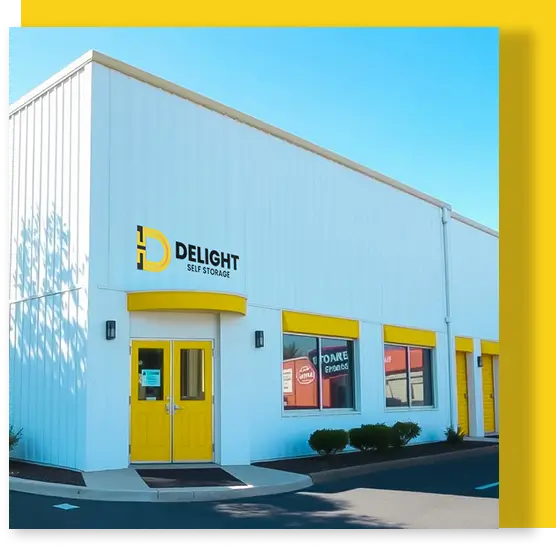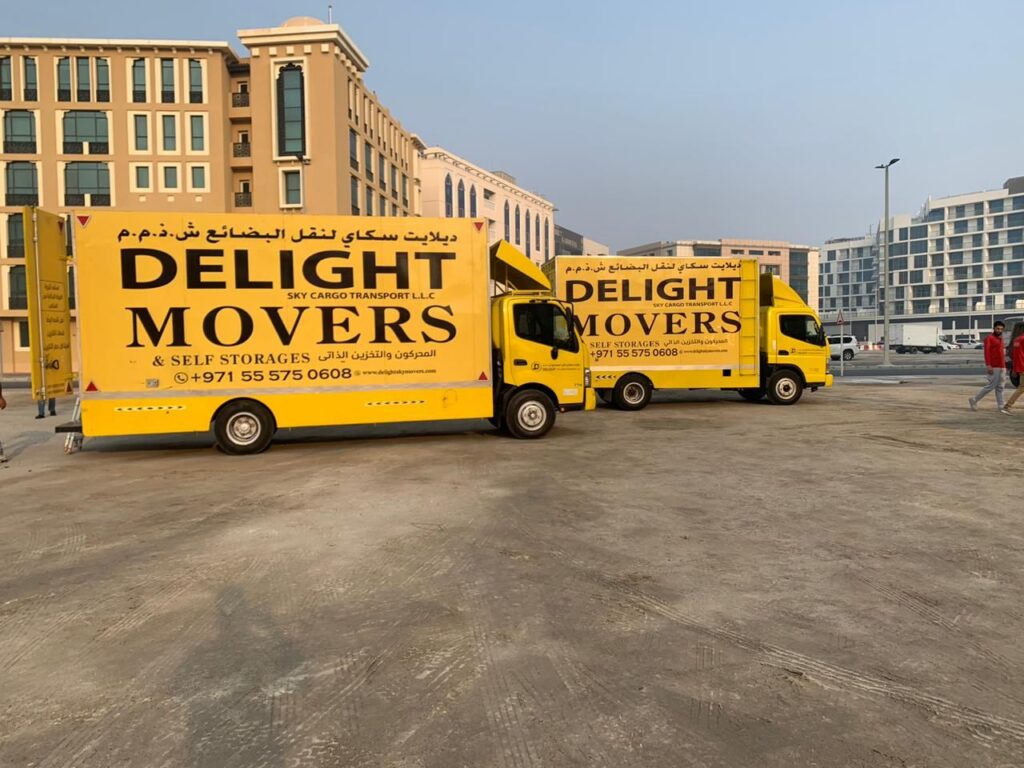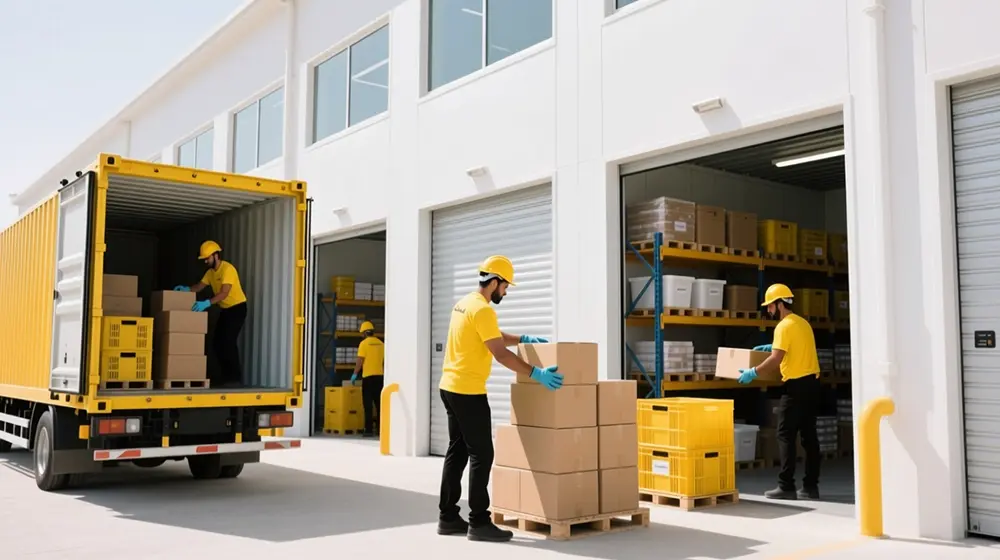Rents keep climbing across nearby hubs. Back rooms spill over. Online returns arrive faster than staff can clear them. In Ajman, that mix turns space into a margin issue. Stock sits where customers should stand. Replenishment slows. Sell-through falls.
The self storage units provide relief. Units incorporate added controlled cubic capacity around retail lines. Access stays simple. Contracts stay flexible. Costs stay predictable. This guide describes why Ajman retailers store stock in self storage units and how the transition enhances day-to-day operations. In the final part, you will find out how self-storage is also quietly transforming the retailing logistics in Ajman and how turning to it can assist your business in remaining agile, efficient, and profitable.
What is driving Ajman retailers to use self-storage units?
In Ajman, retailers face a different kind of pressure. Rising rents in central hubs. Limited back-room space. A need for flexibility. These trends render self-storage units more and more viable as a solution.
The squeeze from rising rents and tight supply
- According to CBRE, in the first quarter of 2024, average industrial and logistics rental rates increased by 14.3 % year-on-year in Dubai and 5.1 % in Abu Dhabi.
- Industrial rents have risen by around 8% during the last 12 months, largely driven by increased leasing rates across locations such as KEZAD.
- Vacancy rates in major logistics zones dropped to around 3 %, reflecting acute supply constraints and further upward pressure on cost.
Why this matters for Ajman-based retailers
- Ajman is a city that is located near big distribution centers, but with cheaper real estate options. When the cost of a core industrial area is high, the overflow capacity will find alternatives in the surrounding areas.
- Retailers deal with both store-floor and back-room demands simultaneously. When lease costs rise, space allocation becomes tighter and stock handling suffers.
- Self-storage units are intermediate capacity: less committed, less costly, and less long-term. The unit cost is less than the full warehouse lease commitment, and thus, the unit cost is also appealing when the site rents are soaring.
Implications for Ajman retailer operations
- Higher core-lease costs force retailers to reconsider inventory storage strategies. Maintaining additional inventory in a secondary location minimizes the burden on the more expensive sales floor.
- A self-storage unit near Ajman has both cost and logistical benefits, considering the high rates of rental increase in the nearby markets.
- As retailers have seasonal peaks or e-commerce returns, a flexible unit will provide capacity growth quickly with no long-term commitment.

How Large Is the UAE Self-Storage Market Today?
The retailers in Ajman are advantaged by the extended market environment where self-storage is involved. Self-storage business in the UAE has a strong growth foundation.
Market Scope & Growth Projections
The UAE self-storage market generated a revenue of USD 602.5 million in 2024 and is expected to reach USD 859.2 million by 2030. The development underscores that demand is residential, but it is more commercial, specifically, retailer inventory storage in such hubs as Ajman.
Segmentation by Unit Size & Application
- The fastest-growing segment, in the next several years, is the one labeled as large-unit (e.g., 150+ sq ft, pallet capacity). To the Ajman retailers, this translates to a shift to the units that can hold business inventory and not just personal storage.
Business Usage & Retail Implications
This market is growing because of a number of phenomena that have direct relevance to retailers:
- Surplus stock, seasonal inventory, and returns have been increasingly leased to off-site storage by retailers and SMEs.
- The growth of e-commerce in the UAE sparks the necessity of scalable storage for fulfillment and promotion batches.
- As warehouse landing rates in large emirates increase, self-storage offers an opportunity as a low-commitment overflow in warehouses.
Cost Efficiency & Strategic Advantage
Due to this growth environment, strategic benefits of the Ajman-based retailers arise:
- It can be much cheaper to rent a medium to large self-storage unit than to rent an entire warehouse in high-rent areas.
- Peak flexibility permits retailers to adjust storage capacity according to seasonal demand to match their cost to utilisation.
- The growing supply and competitive intensity in the self-storage industry enhance bargaining power among smaller retailers: additional facilities will increase the options of the locations near logistics corridors within Ajman..
Why UAE Rent Growth Matters for Ajman Retailers
The retailers in Ajman have been left with a critical strategic decision to either adjust to the rising costs of leasing within the region or seek other means to store their goods. The surrounding UAE surge in industrial and logistics renting is redefining the way in which retailers will treat space.
Regional Lease Pressure: Data-Driven Reality
- Average rents in Dubai grew by 10.6% year-on-year, driven by e-commerce and trade.
- The vacancy rates in the main industrial areas within the UAE fell to around 3 % particularly the Grade A stock, showing a high demand.
Why This Shifts the Storage Equation for Ajman Retailers
- Higher lease costs squeeze back-room storage: With the increasing rates of industrial leasing, surplus inventory in a leased warehouse or industrial facility is not feasible.
- Space-strategy trade-offs emerge: Retailers have the option of paying more for store-front/back-room space or decreased display space, which has direct impacts on revenue.
- Self-storage units become a realistic alternative: Smaller sizes, less commitment, and reduced entry costs make self-storage appealing in managing excessive inventory without bearing the massive leasing costs.
Local Business Signals in Ajman: Evidence That Retail Storage Demand is Rising
The retailers in Ajman enjoy the benefits of local business-growth dynamics. The increased number of economic licences and improved confidence in the business of the emirate point to an increasing number of companies in operation and, by implication, increasing inventory and storage needs.
Robust Licensing Growth Reflects Increased Operational Footprint
- The Department of Economic Development, Ajman, reported a 16% increase in total economic licences issued in 2024 over 2023.
- Industrial licences rose by 28%, commercial licences by 25%, and professional licences by 9%.
- By the year 2024, licence renewals had 131,380, which is an increase of 10% as compared to 2023.
- Ajman had 37,755 active licences in the first half of 2024, 15% higher than in H1 2023.
Business Confidence Index (BCI) Signals Strong Future Demand
- The Business Confidence Index (BCI) of Ajman was 135 points in 2024.
- The present situation sub-index was 114.5 points, and the future possibilities index rose to 155.8, which shows great optimism in the prospective expansion.
High confidence reflects that companies are expecting expansion, expansion in their inventory, new product lines, and retailing higher footprints, hence they arrange more storage space.
Implications for Retailers Using Self Storage Units
- Scaling licences and high BCI create predicted storage demand: retailers will need more buffer space for stock, returns, and seasonal items.
- The presence of new companies alone (and particularly, industrial and commercial companies) unequally leads to increased competition in the field of logistics, warehousing, and back-room space, which, in turn, makes Ajman storage units more attractive.
- The combination of more active business entities + high future optimism = a strong rationale for securing flexible density of storage space now.
One of the primary factors forcing Ajman retailers to enter the self-storage business is rising rents in neighboring emirates such as Dubai and Abu Dhabi.
How Fast Is Ajman’s Consumer Base Expanding?
Knowledge of population growth in Ajman is essential when retailers evaluate storage requirements and inventory approach. An increasing resident base has a direct influence on retail throughput, demand volume, and needed buffer stock space.
Population Growth Trends
- In 2023, Ajman’s metro population was approximately 411,000.
- In 2024, that number rose to 418,000, a growth rate of 1.7% year-over-year.
- It is predicted to grow at a modest pace by approximately 424,000 in 2025.
This constant population growth implies additional households, alters buying behaviour, and augments retail activities, which strain the back-room and off-site storage systems.
Why This Growth Drives Storage Needs for Retailers
- Increased consumer base: The increase in population of about 7,000 in a single year implies an increase in the number of buyers, and this translates to higher inventory throughput and replenishment frequency.
- Higher SKU diversity: Due to increased demand, retailers are adding product lines, variants, and seasonal products, and all these products need to be staged, stored, and turned.
- Storage footprint pressure: Storefront real estate is not always as plentiful (at least in Ajman, where land is not as plentiful as it used to be), so over-inventory cannot always be placed on the shop floor or in the back rooms.
- Need for flexible overflow solutions: The self storage units will become strategic because they can provide the buffer space without entering into long-term lease agreements. Ajman retailers can manage growth spurts as a result of population growth through off-site units.
Through the mapping of population growth into the workload of inventory and storage, the Ajman retailer acquires a strategic reason to rely on self-storage units as a part of the inventory management toolkit.
How Is E-Commerce Growth Increasing Storage Needs for Ajman Retailers?
The Ajman retailers have faced the challenge of increasing online sales, a reduction in the returns flows, and increased demand for fulfillment. The explosion of e-commerce in the UAE also puts a strain on the storage of the back rooms and excess inventory.
Significant Growth in UAE E-Commerce Markets
- The UAE e-commerce market size reached USD 125.0 billion in 2024 to reach USD 776.2 billion by 2033 at a CAGR of 21.4% during 2025-2033.
- The UAE e-commerce market value is at USD 79.94 billion in 2024, growing to USD 270.5 billion by 2032 at a CAGR of ~16.46%.
- The regional Average Order Value (AOV) increased from $30 in 2023 to $35.6 in 2024, with the UAE rising from $89 to $102.
Why This Drives Demand for Self-Storage Units
- More order volume → more stock staging: As online sales increase, retailers should pre-position buffer inventory during fulfilment, segmentation, and quick dispatch.
- Returns and reverse logistics increase space needs: Return rates increase as e-commerce expands. Off-shop floor management needs a separate overflow capacity.
- Omnichannel retail adds complexity: There are numerous retailers with both online and in-store customers. Shared inventory pools cause spikes in demand, necessitating a flexible storage capacity.
- Seasonal surges intensify: Spike events (e.g., Eid, Dubai Shopping Festival) cause event shopping. Retailers require temporary storage that can be expanded at short notice.
- Flexible capacity becomes critical: Conventional warehouse leases are scale-based but not cost-effective. The modular space at self-storage units located around Ajman fits the dynamic online demand.
Which Inventory Categories Do Ajman Retailers Move First?
Retailers in Ajman use self-storage units to secure space, but also strategically move particular types of inventory. These types are selected as they are characterized by high holding costs, low turnover, or seasonal peaks, so they are perfect candidates to be shifted off-site.
1. Slow-movers and Low-velocity Stock
To Ajman retailers, moving slow-movers to a self-storage facility would liberate valuable store-floor and back-room space to more briskly moving products. Key insights include:
- Retailers that moved slow-movers observed lower carrying costs and more space for high-velocity SKUs.
- Keeping slow-moving inventory on the shop floor or in costly lease space can inflate inventory carrying costs, which for many e-commerce and retail operations range from 20-30% of inventory value annually.
2. Bulky and Oversized SKUs
Large home-furnishings, palletised items, bulky, oversized electronics and items, and bulky furniture are taking up precious floor and storage space. Their storage and handling needs increase their costs and also slow down their funds reintegration. Although there are fewer industry-specific statistics on the bulky SKUs, the logistics investigation reports that oversized products can cause a reduction in inventory turnover and higher handling costs.
To the Ajman retailers, temporarily relocating heavy SKUs to a self-storage unit would ease congestion in the main retail premises and allow them to utilize prime real estate even better.
3. Seasonal Stock, Promotional Bundles & Returns
Seasonal highs or returns of retail inventory may need temporary storage prior to sale or clearance. This type is associated with spikes of demand and failure. Studies reveal that seasonal or bulk reversible inventory requires flexible buffer space. An example of this is stores reporting longer offset days, sales of inventory to offset exposure holding costs. Ajman-based retailers use self-storage units to stage:
- Promotional bundles awaiting launch
- Festive-season inventory (e.g., Ramadan, Eid, summer collections)
- Returns awaiting resale or refurbishment
Strategising Which Categories to Move First
When choosing what to move into self-storage units, Ajman retailers often follow a simple prioritisation process:
- Identify SKUs with low turnover or high days-on-hand (slow-movers).
- Flag large physical items that hinder back-room flow (bulky SKUs).
- Map seasonal cycles and promotional calendars to predict surges and returns.
- Calculate carrying cost per SKU: items with high cost and low revenue contribution get higher priority for off-site storage.
What Immediate Financial Gains Do Retailers Report from Using Self-Storage Units?
Retailers based in Ajman face cost pressures from fixed lease commitments in high-rent zones. Redirecting overflow inventory into self-storage units shifts large fixed-cost exposures into more variable, scalable cost structures.

Converting Fixed Lease Cost into Variable Storage Cost
According to CBRE, industrial and logistics rents in the UAE registered double-digit year-on-year increases. In comparison, self-storage facilities come with month-to-month contracts so that one does not have to commit to a long-term lease. Basic self-storage price rates in the UAE:
- Small unit prices in the Dubai region begin at AED 149/month.
- A 50 sq ft apartment in Dubai costs between AED 900-1,400 /month on average, according to size and facilities. This gives the retailers the opportunity to adjust the storage capacity according to business cycles and not be burdened by costly full leases.
Cost Savings and Cash Flow Improvement
- Lower occupancy cost during off-peak: As retail traffic is reduced (e.g., after season, mid-year), off-site storage means that there is less rental burden on excess inventory.
- Avoiding lease escalation: As rents in the UAE increase (e.g., the cost of retail licences and logistics rents), self-storage units will prevent significant increments.
- Improved working capital: By decreasing high-rental storage space and placing smaller and more flexible units, there is a decrease in tied-up capital and an increase in cash conversion.
How Does Using Self‐Storage Improve Shelf Productivity for Ajman Retailers?
Ajman retailers are usually faced with sloppy store floors and overcrowded back rooms. An alternative solution to reclaim prime display space and improve merchandising performance is to have off-site self-storage units.
1. Clearing Back-Room Overflow to Support Prime Floor Placement
Distributors place excess stock into self-storage facilities when they want to clear retailers of sluggish SKUs or large-sized goods, and the effect is treated as a clearance step of the valuable inner warehouse and display spaces. It has been proven that a well-planned shelf space can lead to increased profitability. In the case of an example study, the combination of shelf-dimensioning and product allocation had the potential of increasing profits by 5 % in relation to the benchmark methods. For Ajman retailers, this means:
- Increase the sales space on the floor of the sale.
- Less traffic in the back areas facilitates the free movement of stock replenishment.
- Reduced customer barriers in maneuvering through the store, which improves the shopping process and conversion.
2. Stabilising Planograms, Increasing Shelf Turns and Conversion
Shelf productivity is also boosted by allowing retailers to decrease the number of facings assigned to low utility and increase the ratio to high velocity SKUs. The items placed at the prime shelves (eye-level, end-caps) can increase sales by up to 30 %. When Ajman retailers transfer excess inventory to self-storage facilities:
- They can replicate better planogram compliance (right product, right place, right time).
- They increase shelf turns because fewer slow-movers occupy high-visibility space.
- They improve conversion when high-demand items receive more facings and better placement.
3. Enabling Micro-Replenishment and Responsive Restocking
A storage facility close to a shopping place enables quicker replenishment processes.. Rather than waiting for large warehouse shipments, retailers can stage inventory closer to the store and pull smaller batches quickly as needed. Key operational impacts include:
- Faster replenishment cycles, reducing out-of-stock events.
- Lower carrying costs because only active stock remains on the floor.
- Enhanced ability to respond to demand surges or optional display changes, such as promotions or seasonal shifts.
4. Quantifying the Impact: Metrics Retailers Should Track
To measure the productivity gains from using self-storage units, Ajman retailers should monitor:
- Sales per square metre: Of floor space before and after relocating overflow inventory.
- Shelf-turn rate improvement: Number of full stock-cycles per year for high-velocity SKUs.
- Conversion rate: Change in percentage of store visitors who make a purchase when display space is optimised.
- Average basket size: Expected to rise when display clutter falls and high-margin items get priority placement.
- Out-of-stock incidence: Fewer stock-outs indicate better replenishment flow from off-site storage.
How to Choose the Right Self-Storage Facility: A Checklist for Ajman Retailers
Selecting a self-storage unit is more than picking a space for rent. It is a calculated operational choice among Ajman retailers. To actually take advantage of the current trend to move stock off-site, a facility must provide the following: accessibility, security, environmental controls, flexibility, and cost transparency.
Critical Selection Criteria for Retailers
There are seven criteria of a trustworthy facility. The retailers can have real operational implications on each of these points concerning the management of inventory out of the storefront.
- Proximity to Store Network
- Verified 24×7 CCTV & Access Control
- Fire Detection & Suppression Systems
- Climate Control for Heat-Sensitive Goods
- Transparent Pricing & Insurance Terms
- Contract Structure with Short Extenon Cycles
Facility Selection Matrix
The following table should be used to compare two or more self-storage options:
| Criteria | Facility A Score | Facility B Score | Comments |
|---|---|---|---|
| ≤ 30 min proximity | Driving time vs fuel cost | ||
| 24×7 CCTV & access specs | Confirm coverage & logs retained | ||
| Fire-suppress system compliance | Ask for a certificate | ||
| Climate-control availability | Required for sensitive inventory | ||
| Transparent monthly cost + VAT | Hidden fees? | ||
| Pallet access/loading bay | Handling ability for bulk stock | ||
| Contract flexibility | Short cycle = better agility |
Evaluate each facility using a 1-5 scale on the following areas to facilitate comparison.
Conclusion: Self Storage Is Now a Core Retail Tool in Ajman
Space is not what Ajman retailers are pursuing. They are buying flexibility. Increased industrial space costs, growing population, and accelerated e-commerce cycles turn overflow capacity into an everyday requirement. The short contracts, predictable costs, and proximity of self-storage units provide that capacity.
The operational gains are concrete. Back-room overflow moves out. Best sellers receive more facings. Planograms hold steady. Micro-replenishment reduces out-of-stock windows. Clutter decreases the productivity of shelves.
The financial case is direct. Constant lease interest changes to variable expense. There is a cash drag during off-weeks. The temporary peaks are no longer crises but planned expenses. Retailers hedge their margins and maintain a stock nearer to demand.
It is a long-term strategic value. The retail footprint is extended modularly (units). Teams expand and contract space by month, not multi-year leases. That agility is in favor of promotions, returns processing, and new product trials.
When you have stores in Ajman, do not take self storage as a spare room. Select the appropriate facility, establish good pull lists, and monitor shelf turns, on-shelf availability, and shrinkage. The winning teams will be those that manage cubic meters with as much care as they manage SKUs.
Bottom line: Retailers in Ajman remain flexible, high-performance, and profitable through self-storage units. The shift is not a trend. It is the new operating standard.
FAQs
Why are Ajman retailers using self storage units?
To convert fixed lease cost into flexible capacity and keep bestsellers on prime shelf space.
Which inventory moves first into self storage?
Slow movers, bulky SKUs, seasonal stock, promotional bundles, and returns awaiting resale.
How does self storage improve shelf productivity?
It clears overflow, so bestsellers gain facings, planograms stabilize, and replenishment speeds up.
What is the quick cost benefit?
Month-to-month pricing reduces cash drag during off-peak periods compared with fixed warehouse leases.
How close should a unit be to Ajman stores?
Within 30 minutes of the store cluster to support micro-replenishment and lower transport time.
Do retailers need climate control?
Yes, for heat-sensitive goods such as cosmetics, electronics, textiles, and adhesive packaging.
What security features are must-haves?
24×7 CCTV, controlled access with audit logs, and documented fire detection and suppression.
Which KPIs prove the move works?
Sales per square metre, on-shelf availability, shelf turns, average basket size, and shrink rate.
How does e-commerce change storage needs?
More online inventory raises staging inventory and returns, and thus, accessible overflow ability becomes necessary.
What contract terms suit Ajman retailers best?
Transparent monthly pricing, short extension cycles, clear insurance terms, and no punitive exit fees.


